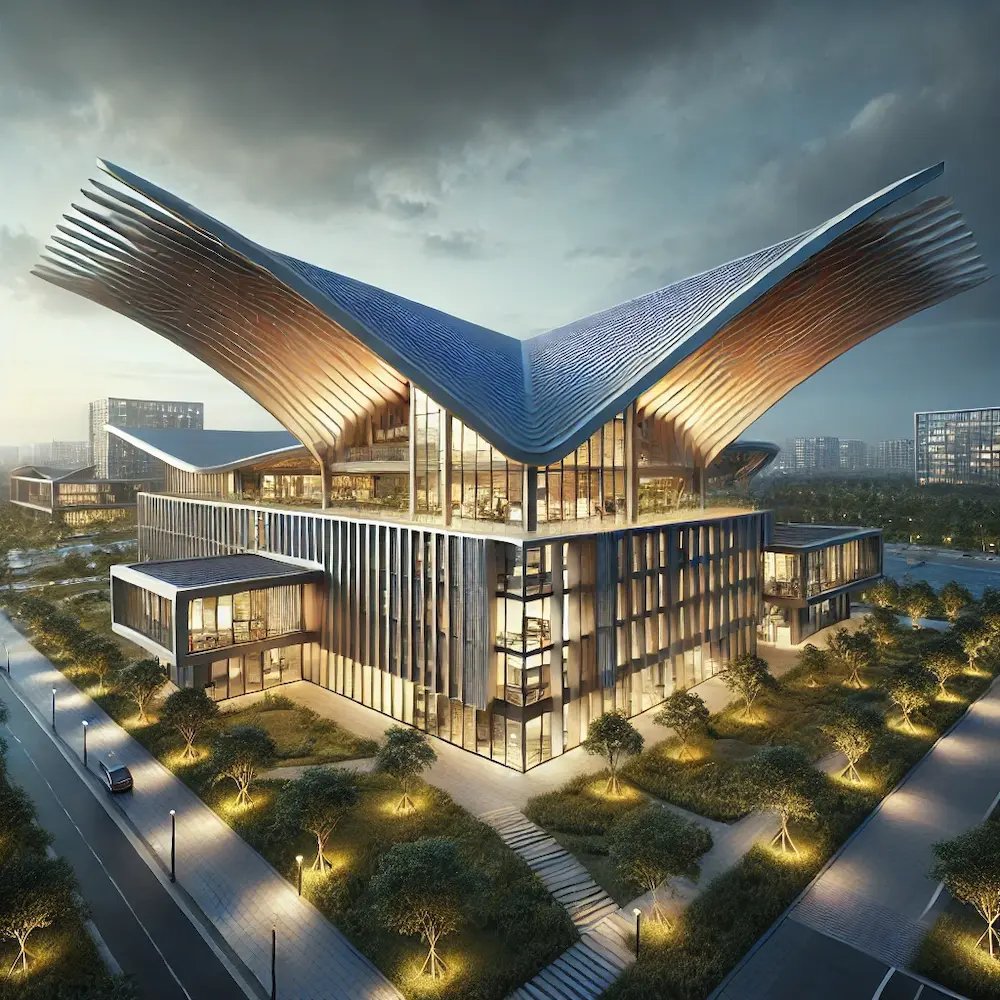A butterfly roof, also known as a V-roof or inverted roof, features two roof surfaces that slope downward from opposing edges to a central valley, resembling the wings of a butterfly in flight.
History and Origins of Butterfly Roofs
The butterfly roof emerged in the early 20th century as architects sought innovative designs departing from traditional forms. Swiss-French architect Le Corbusier first conceptualized this design in 1930 for the unbuilt Maison Errazuriz in Chile. Subsequently, architects like Antonin Raymond and Oscar Niemeyer incorporated butterfly roofs into their projects. In the United States, the design gained prominence in mid-century modern architecture, notably through the work of William Krisel and Dan Palmer in the late 1950s in Palm Springs, California.
Key Features of Butterfly Roofs
- Inverted V-Shape: The roof’s distinctive V-shape is formed by two opposing slopes converging at a central valley.
- Central Valley: This design facilitates efficient rainwater collection and drainage.
- High Perimeter Walls: The upward-sloping edges allow for higher exterior walls, often accommodating large windows or clerestory glazing, enhancing natural light within the structure.
Applications of Butterfly Roofs
- Residential Architecture: Common in mid-century modern homes, particularly in regions like Palm Springs, California, where the design complements the modernist aesthetic.
- Sustainable Design: The central valley is advantageous for rainwater harvesting systems, aligning with eco-friendly architectural practices.
- Aesthetic Appeal: The unique form provides a striking visual element, making it popular in contemporary architecture seeking distinctive design features.
Considerations When Choosing a Butterfly Roof
Advantages
- Efficient Water Drainage: The central valley design allows for effective rainwater collection and drainage.
- Wind Resistance: The aerodynamic shape can perform well in areas prone to high winds.
- Natural Light Enhancement: The design facilitates the incorporation of large windows or clerestory glazing, increasing natural light within the building.
Disadvantages
- Complex Construction: The unique design requires precise engineering and skilled labor, potentially increasing construction costs.
- Maintenance Challenges: The central valley can accumulate debris, necessitating regular maintenance to prevent drainage issues.
- Potential for Water Pooling: Without proper design and maintenance, water can accumulate in the central valley, leading to leaks or structural concerns.
Conclusion
The butterfly roof offers a distinctive architectural statement, combining aesthetic appeal with functional benefits like efficient water drainage and enhanced natural light. However, considerations regarding construction complexity, maintenance, and potential water pooling are crucial. Engaging with experienced architects and builders is essential to ensure the design aligns with the specific requirements and conditions of your project.
